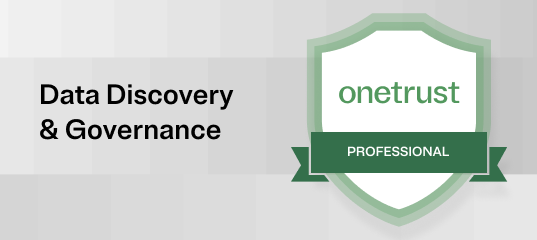Blog
Getting to know the Task Force on Climate-related Financial Disclosures (TCFD)
A primer on the TCFD framework—what it is, why it matters, and how it’s being adopted around the world
Param Gopalasamy
Content Marketing Specialist, CIPP/E, CIPP/US, CIPM
November 13, 2023

Rising temperatures, extreme weather events, and shifting ecosystems: climate change is intensifying. These environmental shifts come with financial and reputational risks for companies in every sector. Individuals and investors want to engage with organizations that prioritize environmental responsibility, but to do so, they need consistent benchmarks and reporting mechanisms pertaining to climate risk. How can businesses adequately disclose and manage climate-related threats affecting their operations, supply chains, and bottom lines?
The Task Force on Climate-related Financial Disclosures (TCFD) is an international initiative that developed a framework for consistent, comprehensive reporting around organizations’ climate risks and opportunities. Its recommendations allow entities to disclose pertinent information to investors and other stakeholders which ultimately foster the shift toward a sustainable low-carbon economy. This transparency lets the market understand and analyze potential climate effects across industries.
Learn more about ESG practices by downloading our eBook, The guide for setting corporate climate goals.
What is the TCFD framework?
The TCFD framework was developed to provide recommendations on the types of climate risk information companies should disclose to stakeholders.
The framework includes four core pillars:
- Governance: Disclosing the organization’s governance around climate-related risks and opportunities.
- Strategy: Disclosing how climate-related risks and opportunities may affect the organization’s business strategy and financial planning.
- Risk management: Disclosing how the organization identifies, assesses, and manages climate-related risks.
- Metrics and targets: Disclosing metrics and targets used to measure and manage climate risks and opportunities.
By reporting across these four pillars, companies provide consistent, structured disclosures to investors and stakeholders on the climate-related risks and preparations of the business.
When did TCFD emerge?
The TCFD formally debuted at the 2015 Paris COP21 climate summit. The Financial Stability Board (FSB), headquartered in Switzerland, established the task force under the leadership of Michael Bloomberg. Its main objective was to develop a voluntary framework for disclosing climate-related financial risks. After two years of extensive research and engaging with stakeholders, the TCFD published its final recommendations in June 2017.
Who uses TCFD?
The TCFD recommendations have been incorporated into climate policies and reporting regulations worldwide. In fact, nearly every continent has integrated the framework in policies and regulations within a few years of its release. Major European legislative initiatives, like the EU’s Corporate Sustainability Reporting Directive, weave the framework into their policies. The United Kingdom, Switzerland, and EU members like France already mandate TCFD-aligned disclosures.
Beyond Europe, other nations across the globe have been quick to embrace TCFD as well. Brazil, Hong Kong, Japan, New Zealand, Singapore, and Canada have all adopted the framework to varying degrees through voluntary principles or mandated reporting.
Why has TCFD adoption grown so quickly?
The swift endorsement of the TCFD recommendations comes down to their value in creating market transparency. As Michael Bloomberg, chair of the TCFD, states: “Increasing transparency makes markets more efficient and economies more stable and resilient.”
This standardized mechanism for companies to disclose climate risks and opportunities resonated across industries. The vision of consistency and completeness in climate reporting allows investors to make informed decisions and governments to develop sound policies. Since its recommendations were published, major corporations and financial institutions have signaled their TCFD support, and adoption continues to gain momentum worldwide.
How are countries implementing TCFD reporting requirements?
Even as the adoption of the TCFD recommendations gains steam globally, nations are taking varied approaches to integrate the disclosures into law. While the framework is consistent, implementation timelines and specific requirements differ across regions.
In Europe, the United Kingdom, Switzerland, and the EU have been proactive adopters of mandatory TCFD-aligned reporting. Other nations are phasing in TCFD disclosures sector-by-sector over the next few years. The United States and Japan introduced TCFD-aligned requirements more broadly in 2022, though with longer phase-in timeframes. Overall, the trend is clear: TCFD adoption is accelerating with regulatory mandates across the globe.
Here’s a snapshot of the TCFD reporting timelines and requirements in key countries worldwide:
Country | Reporting Timeline | Industries |
Switzerland | July 2021 | Large banks and insurers |
United Kingdom | April 2022 | All listed and private companies with over 500 employees |
Japan | April 2022 | Starting with companies listed on the Prime market |
Brazil | July 2022 | Banks |
Singapore | 2022 – 2024 | Sector-wise “comply and explain” basis in 2022, mandatory in 2023/2024 |
New Zealand | 2023 | Large financial institutions |
US | FY24 | All companies that report to the SEC |
Canada | 2024 | Phased approach for all federally regulated financial institutions |
EU | 2024 | Phased approach starting with larger organizations |
Hong Kong | 2025 | Financial institutions |
TCFD offers clear insight into cloudy climate risks
As climate change intensifies, so does the need for transparency around business effects and preparations. The Task Force on Climate-related Financial Disclosures provides a consistent framework for companies worldwide to disclose climate risks and opportunities. Though TCFD adoption timelines vary across countries, momentum continues to build. Markets, regulators, corporations, and investors see value in TCFD disclosures to make informed decisions amid a warming world. And as climate risks come into focus, so will reporting through frameworks like TCFD.
Stay ahead of climate risk disclosures and strengthen governance oversight — a crucial part of ESG — with the OneTrust ESG & Sustainability Cloud.
You may also like

Webinar
ESG Program Management
The intersection of ESG & GRC: A fireside chat
Join our team of experts for a fireside chat webinar on ESG and how it works with risk, third party management and more.
June 21, 2023

Webinar
ESG & Sustainability
Moving beyond metrics
In this session, we’ll cover leveraging technology to accelerate your ESG program and bring scale to your mission to have the highest potential impact.
September 12, 2022

Webinar
ESG Program Management
CSRD Masterclass: Your guide to prepare for 2024 reporting
Watch our CSRD Masterclass series where we dove into the Corporate Sustainability Directive, how it fits into the EU Taxonomy and the Green New deal, and how you can prepare for your 2024 reporting.







